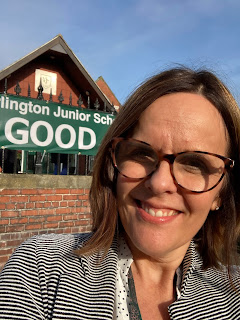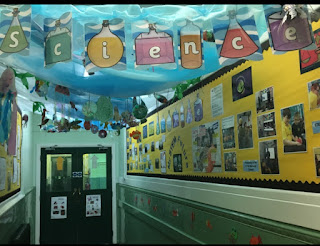Engineering at Primary
At primary level, there has been a huge focus on academic learning and it has become increasingly obvious over recent years that more independent, hands on/ investigative experiences that develop transferable skills are fewer and further between for our KS2 pupils in many cases. A lack of time and emphasis on ‘making’ skills/ fine motor skills/ Design and Technology have added to this issue. In addition, future challenges for our workforce due to advancing IT/AI and stereotypical misconceptions mean that it is more important than ever for our kids to be thinking and learning about STEM in order to ready them with skills and knowledge required for their adult lives and potential careers.
At Burlington Juniors, we have been so lucky to be involved
in ‘Developing to be an Engineer’ with the ‘Science and Engineering Education
Research and Innovation Hub’ (SEERIH), University of Manchester, Dr Lynne
Bianchi and Julie Wiskow. It has been a brilliant experience and our pupils,
right across school, have enjoyed taking part in Engineering activities over
the last year or so and learning more about STEM. Initially, pupils had many misconceptions
regarding Engineering and thought it was more something for boys and that it really
just meant becoming a mechanic. With various visitors into school, including Ross
O’Brien from BP, we were able to begin to address those misunderstandings. The
children were really enthused by this visit and started to learn about the five
different types of engineering and how they affect us in everyday life. They were
challenged by Ross to design something to make a ‘Cleaner and Greener Bridlington’-
which is where they live so made the activity local and personal to them. They
came up with great ideas from automated litter pickers and tyres which collect
litter when moving to elevating streets so to avoid litter at street level.
This strategy fits with Professor Louise Archer/YESTEM ‘Equity
Compass’ where making learning relevant and truly meaningful really connects pupils
to their learning and subsequently enhances their engagement and
internalisation of knowledge significantly. To find out more, please follow the
attached links to highly recommended documents and webinars
EQUITY-COMPASS-YESTEM-INSIGHT.pdf
Fun
moments or consequential experiences? - Royal Academy of Engineering
(raeng.org.uk)
This webinar is part of a series of inspirational and excellent webinars from the Royal Academy of Engineering which also includes a session with-
Professor Bill Lucas, Engineering habits of mind - Royal Academy of Engineering (raeng.org.uk)
Dr Lynne
Bianchi
Regarding SEERIH- initially, a colleague and I travelled over to Manchester University for training and to meet other schools taking part. This was highly informative and a great start- we met Dr Lynne Bianchi and Dr Jon Chippindall, and Rose Edmonson who is also now part of their team. We learned about the ‘Engineering Habits of Mind’ (EHOMs) and tinkering and worked to ensure that lesson plans we designed supported their development. We were supported in this task and took plans back to school- I linked mine to Y6 Electricity and my colleague connected theirs to Y3 Light.
These were later delivered and were a great success. The children loved the different way of learning and being really hands-on. They loved the different content of the lesson and stated that somehow, it just didn’t feel like learning to them. They were really engaged and interested to pursue this further.
Y6- Electrical- Imagine and plan- Create
They had learned the Year 6 content for ‘Electricity’,
building on prior knowledge from Year 4. The twist came when we took a hair
drier to pieces and they adapted it independently to create hand held hoovers.
They absolutely loved it. It was also a great active assessment task as they
really showed a deeper knowledge of electrical components. The children moved
from understanding how parts within a particular system function and interact
with each other, using knowledge gained, to produce a new product. It developed
communication and problem solving skills as well as team work.
George- ‘I enjoyed tinkering to make it work and then make
it work better’.
Jack- ‘I really liked the trial and error element of the
lesson’.
Grace- ‘We had to be accurate and resilient. It was a
different way of learning that gave me the opportunity to think myself about
which way I would solve the problem’.
I am so proud that this activity will feature in a Royal Academy of Engineering report produced by Dr Lynne Bianchi and colleagues, which is due to be published soon.
This also encouraged me to link with the Institution of Mechanical
Engineers (IMechE). We used a kit we had received from them to build catapults
and moving cars amongst other things. The children loved it. Read more by
following the attached link ‘STEM at Home activities- Q and A with Kate Sutton
STEM
at Home activities: Q&A with Kate Sutton (imeche.org)
Lock-down hit, the ripples of which were felt everywhere and
the SEERIH incentive was adapted to become online. We had training with Lea Jagendorf
@Fixperts which was highly informative and truly inspirational. We took this
back into the classroom.
Our Year 3 pupils were given an adapting activity and were
challenged to use a pivot- illustrated by a pair of scissors- to create
something useful for in the house. They designed contraptions which would
support with reaching, making and even turning the television over with the
remote control! They felt that they would be useful for less active people who
had injuries perhaps.
Adapting Santa’s Sleigh was also an excellent seasonal
activity which really gave an insight into the Engineering thought processes
our pupils were going through right across the year groups- whilst in school
and home learning. The children were really engaged and came up with some
marvellous designs and ideas for up-levelling Santa’s sleigh. These included a
retractable roof, heating, hot drinks machines, better steps to get in and out
and more!
Further training and
discussion
Julie Wiskow created further
lessons which we chose from to deliver in school. This was to support
participating schools during what has been such an unprecedented time. Many
lessons worked really well as home learning activities and children working
from home produced some brilliant work as well as pupils in school.
Zoom- Imagine and Plan- systems thinking.
Understanding how systems are connecting different parts together.
Zoom by Istvan Banyai -
YouTube
Y3-6 This was interesting and fascinating to see how it was adapted by the children involved. It started as an illustration task to understand components after watching the clip- Zoom. This was adapted by our children and became an activity that many took part in outside, using outdoor learning as an opportunity to promote good mental health and well-being. They made cardboard picture frames and observed a particular spot outside from various distances-far away to very close up. They sketched what they saw after close observation. Our Year 6 pupils took photographs in a similar way, observing different areas outside in intricate detail. One Year 3 pupil, working from home, took a series of photos, starting from a distance from his room and moving closer until the final image was a pixilated screen in his bedroom- really innovative.
Underwater Habitat- Many children across Y3, Y4, Y5 and Y6
took part in this activity in various ways from designing an undersea base as
an illustration and/or creating a model to creating an undersea habitat on Minecraft
which was really innovative. Many went through various thought processes and
amended time and again to adapt their plan to suit human requirements for life.
We are looking forward to further activities after Easter and to hopefully being able to get ‘face-to-face’ with other colleagues talking part at some point in the future.
Children Challenging Industry
CIEC and Careers Education- see previous blog
http://www.ciec.org.uk/primary.html#top
At our school, the Year 5 pupils are participating after
Easter with the ‘Yorkshire and the Humber’ region schools. We are all very
excited about it. This will include virtual visits into industry and live link
ups with CIECs specialist teacher and industry professionals.
Bloodhound
Last summer- during their time working in a bubble at school- our Year 6 pupils were really engaged and captivated by the Bloodhound attempt on the World Land Speed record and followed it intently. We engaged with resources on their website and are hoping to participate in further Bloodhound activities after Easter. https://www.bloodhoundlsr.com/ @BLOODHOUND_Edu
Our school is part of a STEM Enthuse Partnership- funded by
Orsted- with a group of schools in our area. Our aim is to research and develop
STEM learning, engagement and understanding amongst our female pupils and these
activities have certainly worked in this regard towards our aim. STEM Learning
also offer some brilliant Primary Engineering CPD on their website and via
Futurelearn.
stem.org.uk/cpd
https://www.stem.org.uk/enthuse-partnerships-schools-and-colleges
Free
Online Maths, Science and Engineering Courses - FutureLearn
I am so proud that my school, Burlington Junior School, and
our pupils, are having some amazing opportunities to learn more about STEM
subjects including Engineering. It is so important that we work to bridge the
STEM skills gap in order for all our children to access chances available to
them and ensure social mobility for all; and also, that we educate our kids so
that we have enough STEM professionals to undertake roles available in the
future. It is pivotal that children have a wider understanding of various
careers at KS2 including STEM subjects- you cannot be what you cannot see.
For further information, follow the link below to SEERIH.
https://seerih-innovations.org/tinkering4learning/engineering-habits-of-mind/











Comments
Post a Comment